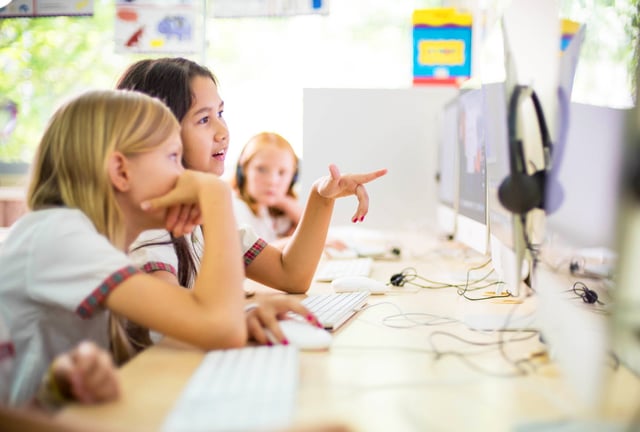-1.png)
EtonHouse Singapore
Blended learning combines online digital media with traditional classroom methods. However, it's not merely adding computers in classrooms or uploading learning materials online.
In a blended learning environment, technology not only supplements learning, it also transforms the entire learning process. It is a fundamental change in the way teachers and students approach the learning experience.
Students as active pursuers of knowledge
Students are no longer passive recipients of knowledge. They can choose how, where, when to learn and at a pace they are most comfortable with. As they become active learners who have control over their learning, they come to recognize and appreciate that they are responsible for the decisions they make and the successes they achieve. This sense of empowerment makes them highly enthused.
For example, it is common to see in a classroom - students learning independently at computers or with digital devices, doing research and analysing their findings, while the teacher walks around to give individualized attention and support.
Teachers as facilitators and motivators, rather than transmitters of knowledge
As students learn part of the content independently on digital devices, teachers no longer need to communicate a huge amount of information to an entire class. Instead, during class time, teachers can observe students more closely, work with small groups and identify an individual's challenges and struggles. This allows teachers to provide timely guidance and personal coaching.
Rather than a taskmaster or disciplinary figure, a teacher becomes a facilitator and motivator. The enhanced and personal interaction between teachers and students builds a stronger rapport, making learning spontaneous and meaningful. Professional development of teachers is also changing dratically and becoming available to all. Micro-credentialing and digital badging will help more teachers to upgrade and enhance their skills.

Online Learning Communities
With technology integrated in almost all aspects of our lives, the concept of 'classroom' has shifted and learning communities are no longer confined to physical spaces. Interactions migrate to online discussion forums and interactive multimedia experiences, beyond school hours.
In contrast to adhoc sharing on social networks, online learning communities are deliverately set up with the purpose of achieving intended learning goals. There is a strong sense of community as members depend on one another's support and participation to achieve learning outcomes.

-1.jpg)